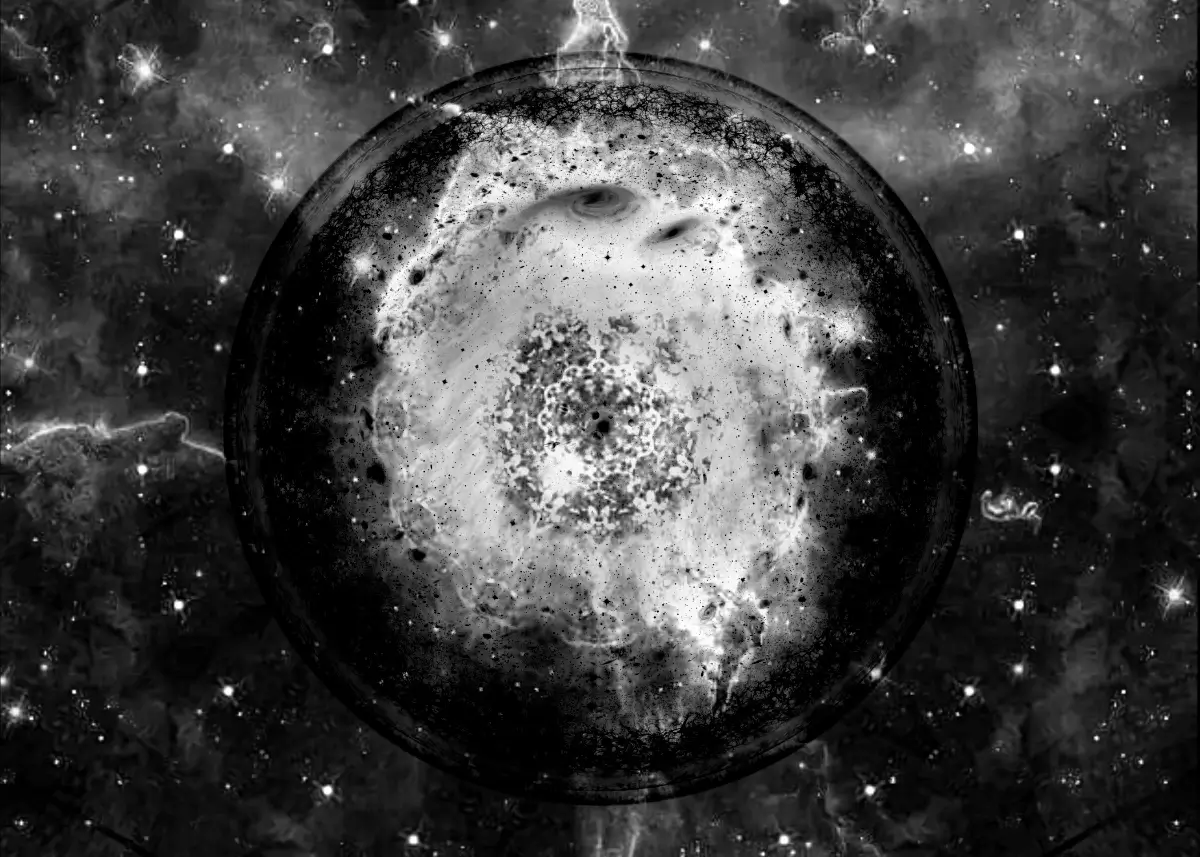cosmology
the universe is not a tidy equation

Reading time...
Until now, physics and cosmology have assumed that the Laws of Nature exist independently of — and precede — the universe in which we live. These laws are taken to be timeless, external principles that set the universe in motion and shaped it from the beginning. The ultimate hope has been to express these laws in a single, unifying formula — a theory so complete that even the so-called initial conditions would follow from it.
This traditional “bottom-up” approach, however, seems to have reached a dead end.
Physicists Stephen Hawking and Thomas Hertog turned this logic on its head in what they called “top-down cosmology.” According to them:
“The top-down approach we have described leads to a very different view of cosmology, and of the relationship between cause and effect. Top-down cosmology is a framework in which one essentially follows histories backward, from a spatial surface in the present age. The no-boundary histories of the universe thus depend on what is observed, as opposed to the usual idea that the universe has a unique history independent of the observer.”
This view draws on quantum theory and its strange logic: a quantum state acquires a definite value only when it is measured — that is, when it is observed. Before observation, all potential values coexist in a kind of suspended simultaneity, a superposition of possibilities.
Seen in that light, the early universe — the so-called singularity from which space and time emerge — can be treated as a quantum system containing all possible configurations of matter, energy, and geometry at once. Yet only within a particular observational framework do specific “histories” become meaningful.
In other words, the beginning of the universe is not a single fixed event long ago, but a web of potential beginnings whose significance depends on the observational conditions we impose now.
In that sense — the Big Bang still happens now: not as a literal explosion unfolding in this moment, but as the ongoing actualization of the universe’s possible histories through our participation in it.
It follows that the way the universe appears to us is inseparable from the context in which we observe it. “Observation,” here, need not mean human consciousness alone; it refers to the physical conditions that define a particular viewpoint within the whole. Whether one speaks of us as humanity, as biological organisms, or as consciousness itself remains an open question — but what is clear is that there is no purely external vantage point from which to describe reality “as it is.”
Another implication is that the so-called Laws of Nature are not immutable decrees living in a Platonic heaven. They may have evolved along with the universe, stabilizing through a kind of cosmic selection until they took the forms we now observe. This also means that the so-called "universal constants" might not always have been the same and this could mean that there is no need to either "Dark matter" nor "Dark energy" —
(see: Rajendra P. Gupta, https://doi.org/10.3390/galaxies13050108).
“Understanding the order of the universe and understanding its meaning are not identical, but they are not very far apart. … In our theory the universe is a grand synthesis. It is not one thing happening after another after another. It is a totality which includes us and in which what happens now gives reality to what happened in the past. Most people think that the world exists out there, independent of us. However, our theory shows that isn't the way the world works. We have taken a step back from the cold Copernican worldview that has dominated physics for several centuries and put mankind back in the centre”
This doesn't mean that Hawking supports a literally anthropocentric universe.
Still, most physicists — Hawking and Hertog included — continue to seek a unified theory in which the quantum forces and gravity merge, and where the laws of nature themselves arise from the theory. Yet I suspect this hope will remain unfulfilled.
It is impossible to step outside the universe to see it whole, for there is no outside — not for us. We are part of this same unfolding, part of the very system we attempt to understand.
Like a hammer that cannot strike itself, the universe can never render itself entirely transparent. There will always be irregularities, paradoxes, and edges that do not fit the frame.
The universe is not a tidy equation.
It is as messy, unfinished, and alive as we are.